With the growth of the stablecoin market and the exponential increase in tokenized assets, Pendle is fully capable of becoming the fixed income layer that powers the next wave of asset issuance.
Author: Greythorn
Pendle Finance ($PENDLE) has become the dominant fixed income protocol in DeFi, allowing users to trade future yields and lock in predictable on-chain returns. In 2024, it powers major narratives such as LST, restaking, and yield stablecoins, solidifying its position as a launch platform for asset issuers.
By 2025, Pendle will transcend its Ethereum roots, evolving into a full-stack fixed income layer for DeFi, targeting new markets, products, and user bases for crypto-native and institutional capital.
The on-chain yield derivatives market reflects one of the largest segments in TradFi: interest rate derivatives, a market worth over $500 trillion. Even moderate on-chain adoption represents billions of dollars in opportunity.

Source: Bank for International Settlements (BIS)
While most DeFi platforms only offer variable yields, exposing users to market volatility, Pendle has launched fixed-rate products through a transparent and composable system.
This innovation reshapes the $120 billion DeFi landscape, positioning Pendle as the dominant yield protocol. In 2024 alone, it grew 20 times, capturing over 50% of TVL in the yield space, five times that of its second-largest competitor.
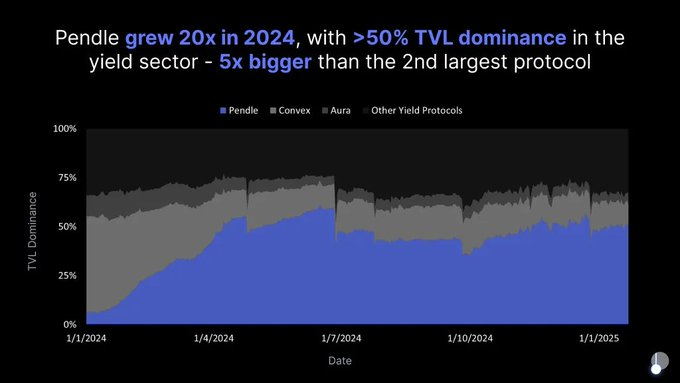
Source: Pendle (Medium)
Pendle is not just a yield protocol; it has also evolved into a core DeFi infrastructure, becoming a key liquidity driver for some of the largest protocols in the ecosystem.
Achieving Product-Market Fit: From LST to Restaking
Pendle gained early attention by addressing a key issue in DeFi: unstable and unpredictable yields. Unlike Aave or Compound, it allows users to lock in fixed returns by separating principal from yield.
With the rise of LST, its adoption surged, helping users unlock liquidity from staked assets. In 2024, Pendle captured the restaking narrative—its $eETH pool became the largest on the platform just days after launch.
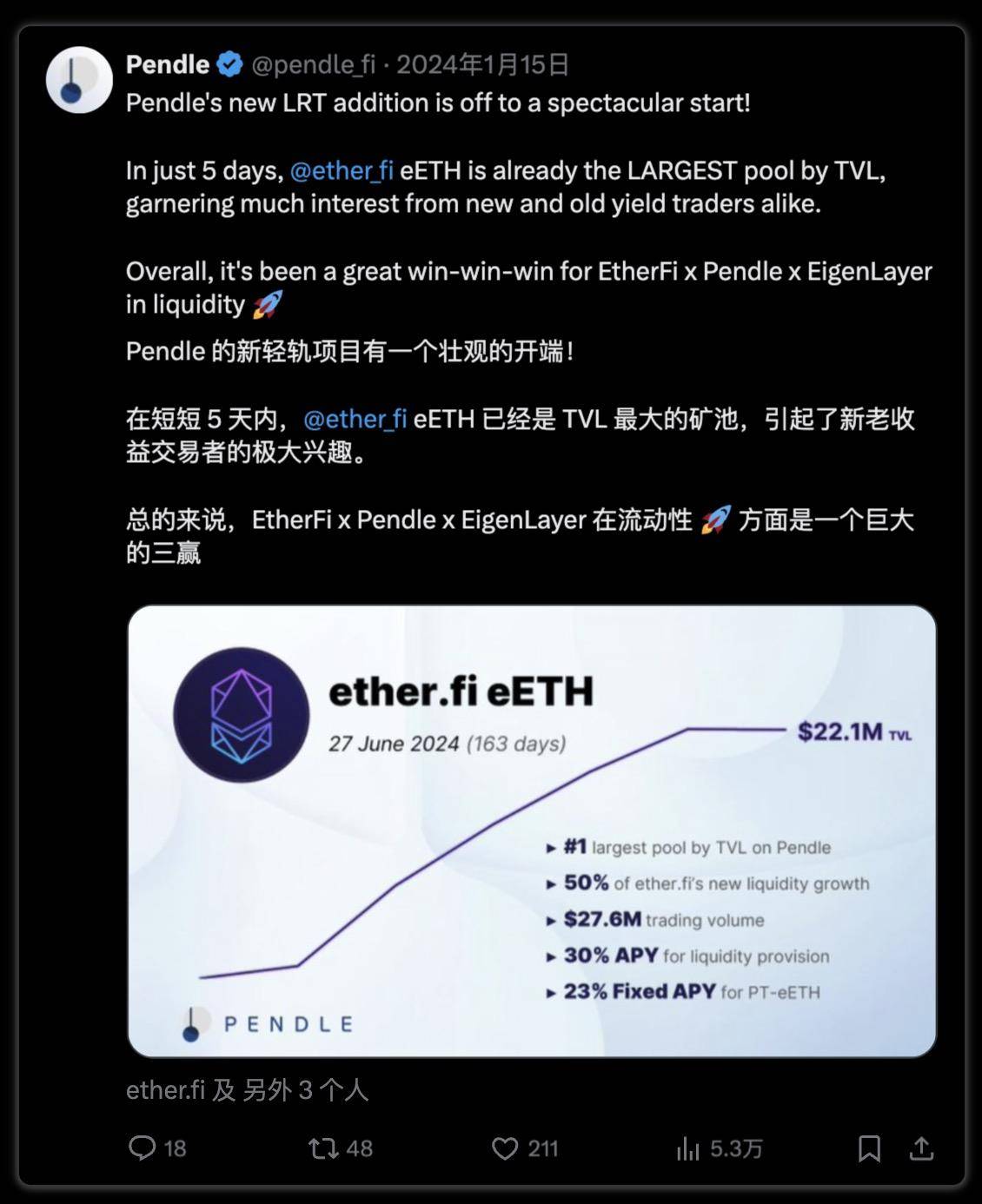
Pendle's infrastructure now plays a critical role across the yield ecosystem. Whether providing hedging tools for volatile funding rates or serving as a liquidity engine for yield assets, Pendle is uniquely positioned to benefit from the growing segments of LRT, RWA, and on-chain money markets.
Pendle V2: Infrastructure Upgrade
Pendle V2 introduces Standardized Yield (SY) tokens to unify the packaging of yield assets. This replaces the fragmented custom integrations of V1 and enables seamless minting of Principal Tokens (PT) and Yield Tokens (YT).

Source: Pendle Finance. "How SY tokens are split into PT and YT tokens." Pendle Documentation
The AMM in V2 is designed specifically for PT-YT trading, offering higher capital efficiency and pricing. V1 used a generic AMM model, but V2 introduces dynamic parameters like rateScalar and rateAnchor to adjust liquidity over time. This results in tighter spreads, better yield discovery, and lower slippage.
For liquidity providers, V2 offers stronger protections. The liquidity pools now consist of highly correlated assets, and the AMM design minimizes impermanent loss, especially for LPs holding to maturity. In V1, the outcomes for LPs were harder to predict due to less specialized mechanisms.
Breaking EVM: Solana, Hyperliquid, and TON
Pendle's plan to expand to Solana, Hyperliquid, and TON marks a significant turning point in its 2025 roadmap. Until now, Pendle has been limited to EVM-based ecosystems, where it has dominated the fixed income space with over 50% market share.
The next wave of growth in cryptocurrency will see an increasing number of chains—Pendle's Citadel deployment initiative breaks the EVM island, enabling it to tap into entirely new pools of capital and users.
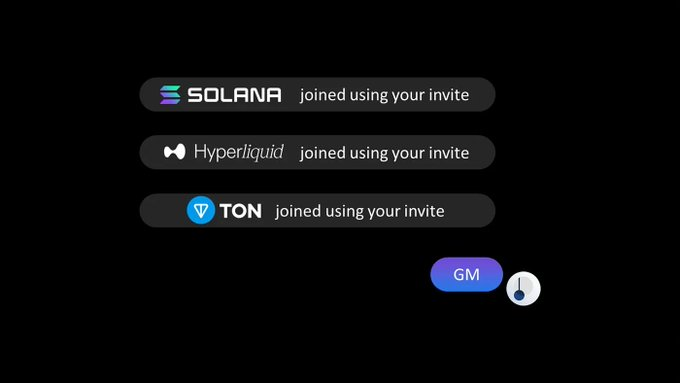
Source: Pendle (Medium)
Solana has become a major hub for DeFi and trading activity, with a TVL exceeding $14B in January, boasting a strong retail user base and a rapidly growing LST market.

Source: DeFiLlama (defillama.com)
Hyperliquid, with its vertically integrated perpetual contract infrastructure, and TON, with its native user funnel from Telegram, offer high-growth opportunities that complex yield infrastructures cannot meet. Pendle can fill this gap.
If successful, these deployments could significantly expand Pendle's total addressable market. Capturing fixed income flows on non-EVM chains could translate into hundreds of millions in incremental TVL. More importantly, it would not only strengthen Pendle's position as an Ethereum-native protocol but also as the fixed income layer for DeFi on major chains.
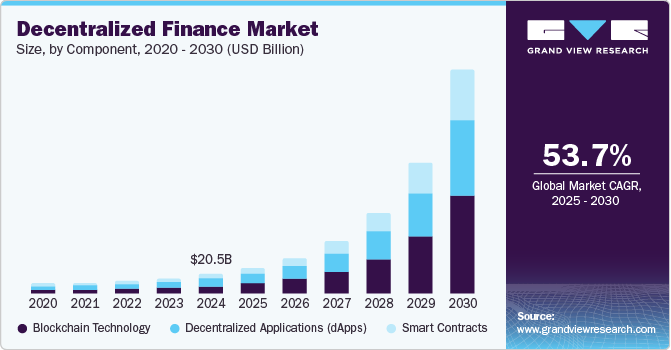
Source: Grand View Research
Citadel for TradFi: Building Regulated Yield Access
Another key catalyst in Pendle's 2025 roadmap is the launch of Citadel, designed for institutional capital and compliant with KYC standards. The goal is to connect on-chain yield opportunities with regulated capital markets by offering structured, compliant crypto-native fixed income products.
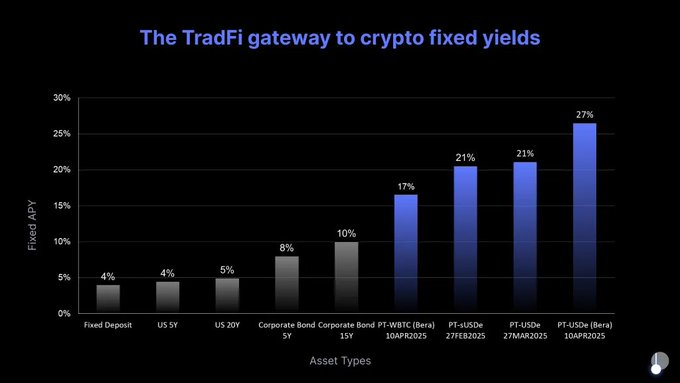
Source: Pendle (via Medium publication)
The plan involves collaborating with protocols like Ethena to create isolated SPVs managed by regulated investment managers. This setup eliminates key friction points in custody, compliance, and on-chain execution, allowing institutions to access Pendle's yield products through familiar legal structures.
With the global fixed income market exceeding $100 trillion, even a slight shift towards on-chain adoption by institutions could translate into billions in inflows. A 2024 survey by EY-Parthenon found that 94% of institutional investors believe in the long-term value of digital assets, with over half increasing their allocations.
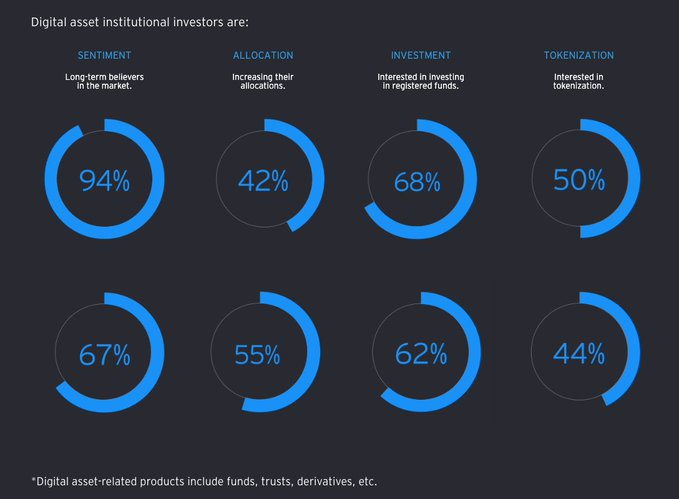
Source: EY-Parthenon, "Investor Sentiment on Digital Assets is Evolving," 2024.
McKinsey estimates that the tokenized market could reach $2-4 trillion by 2030. While Pendle is not a tokenization platform, it plays a crucial role in enabling price discovery, hedging, and secondary trading for tokenized yields. Whether it’s tokenized treasury bills or yield-generating stablecoins, Pendle can serve as the fixed income layer for institutional-grade strategies.
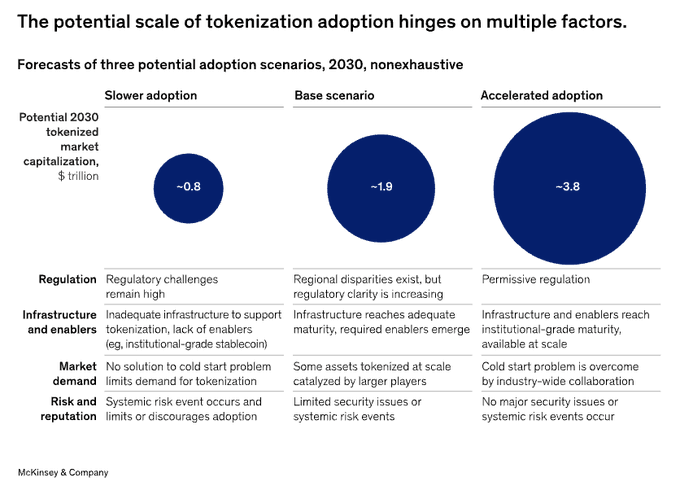
Source: McKinsey & Company, "What is Tokenization?," 2024.
Citadel for Islamic Finance: A $4.5T Market Opportunity
Pendle also plans to launch a Sharia-compliant Citadel to serve the global Islamic finance market—an industry estimated to be worth $4.5 trillion, with operations in over 80 countries. The sector has grown at a compound annual growth rate of 10% over the past decade, particularly in Southeast Asia, the Middle East, and Africa.
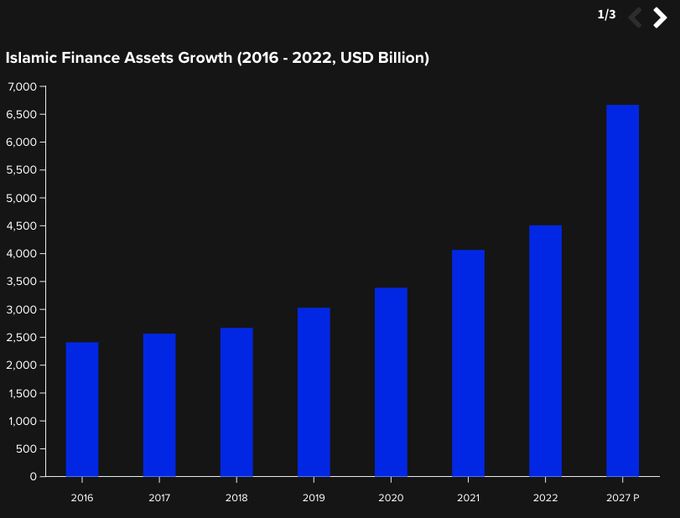
Source: ICD-LSEG, "Islamic Finance Development Report," 2023.
Strict religious restrictions have historically limited Muslim investors' access to DeFi. However, Pendle's PT/YT framework offers the flexibility to develop yield products compliant with Islamic principles, potentially similar to Sukuk (Islamic bonds).
If successful, this Citadel will not only expand Pendle's geographical reach but also demonstrate DeFi's ability to adapt to various financial systems—reinforcing Pendle's role as a global fixed income infrastructure in the on-chain market.
Pendle's Strategic Entry into the Perpetual Yield Market
One of the most important catalysts in Pendle's 2025 roadmap is Boros—a new vertical that introduces fixed-rate trading into perpetual funding yields. While Pendle V2 establishes the protocol as a leader in spot yield tokenization, Boros extends its influence into the largest and most volatile source of yield in cryptocurrency: perpetual contract funding. The perpetual market has over $150 billion in open contracts and daily trading volumes exceeding $200 billion, representing a vast but under-hedged segment.
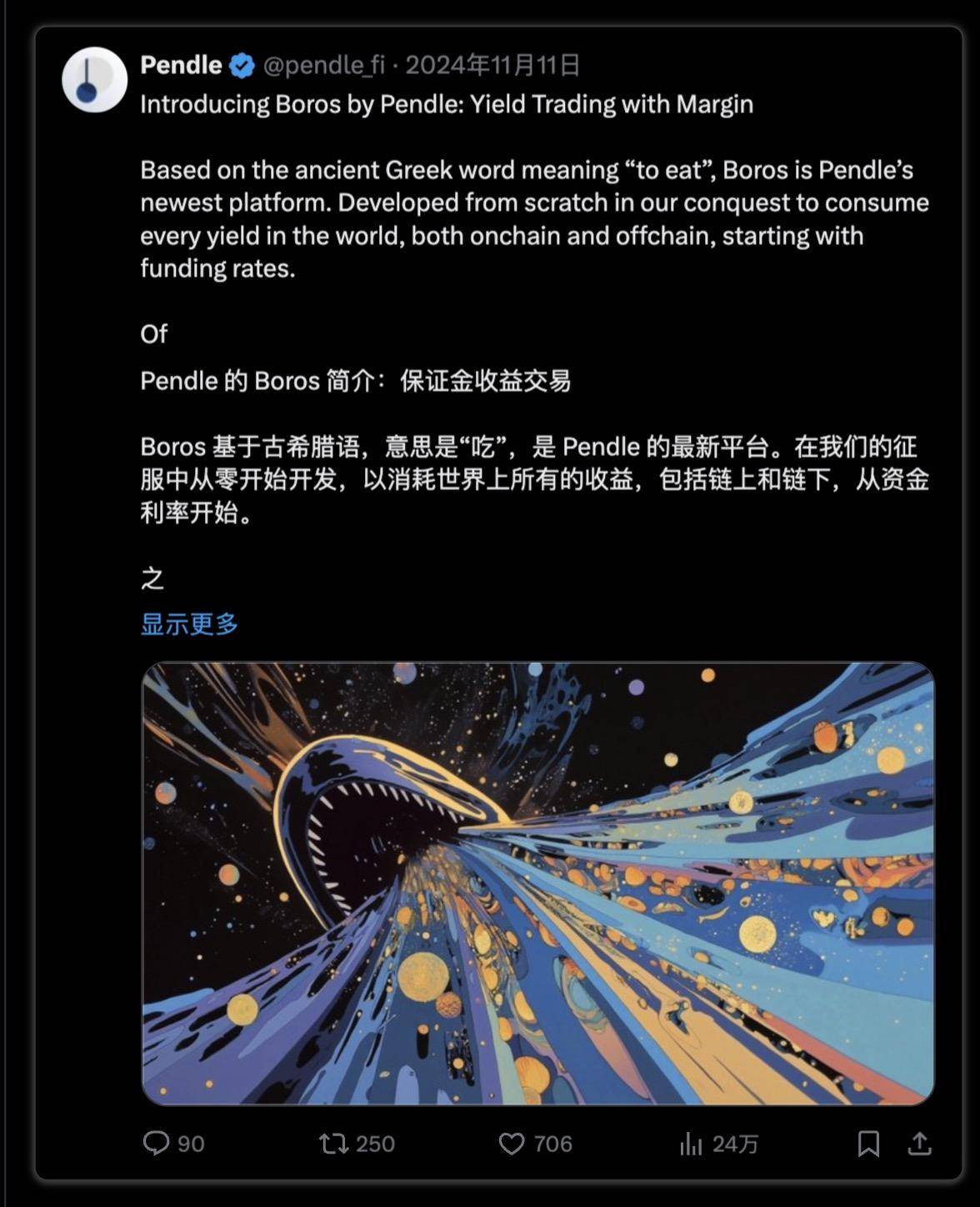
Boros supports fixed funding rates, providing critical stability for protocols like Ethena. This is essential for managing large-scale strategies for institutions.
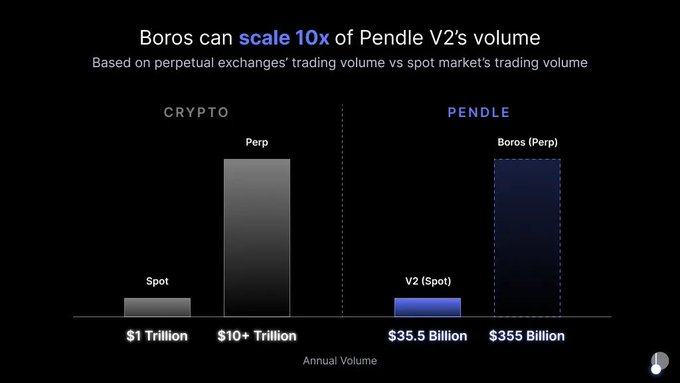
Source: Pendle (via Medium publication)
The benefits for Pendle are substantial. Boros opens up a multi-billion dollar market that was previously out of reach. It also shifts Pendle's narrative—from a DeFi yield application to an on-chain application equivalent to traditional financial interest rate desks, similar to those offered by CME or JPMorgan.
Boros also strengthens Pendle's long-term advantages. Pendle is not chasing trends but laying the groundwork for future yield infrastructure. Through use cases like funding rate arbitrage and cash and arbitrage strategies, it provides real tools for traders and treasury management.
Moreover, with no scalable funding hedging solutions currently available (in either DeFi or CeFi), Pendle has a clear first-mover advantage.
If successful, Boros could significantly expand Pendle's market share, attract new user bases, and solidify its position as the fixed income layer in DeFi.
Leadership and Strategic Partnerships
Pendle Finance was founded in mid-2020 by a pseudonymous team publicly known as @tn_pendle, GT, YK, and Vu. Since its inception, it has garnered support from notable investors, including Bitscale Capital, Crypto.com Capital, Binance Labs, and The Spartan Group.
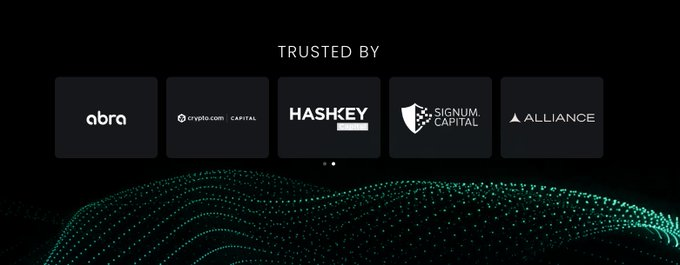
Source: Pendle Finance Official Website
To support its growth and expansion, Pendle has completed several rounds of significant funding and strategic initiatives:
● Private Token Sale (April 2021): Raised $3.7 million from investors such as HashKey Capital, Mechanism Capital, and Crypto.com Capital.
● Initial DEX Offering (IDO) (April 2021): Raised $11.83 million at a token price of $0.797.
● Binance Launchpool (July 2023): Distributed 5.02 million PENDLE tokens through Binance's Launchpool program, accounting for 1.94% of the total token supply.
● Strategic Investment from Binance Labs (August 2023): Binance Labs made a strategic investment to accelerate Pendle's ecosystem growth and cross-chain expansion. The investment amount was not disclosed.
● Arbitrum Foundation Grant (October 2023): Received a $1.61 million grant from the Arbitrum Foundation to support Pendle's development on Arbitrum.
● Strategic Investment from The Spartan Group (November 2023): Pendle received strategic funding from The Spartan Group to bolster long-term growth and institutional adoption. The investment amount remains undisclosed.
Pendle actively collaborates with leading protocols to expand its ecosystem and bring fixed income trading to a broader array of assets and networks. Key partnerships include:
● Base (L2 by Coinbase): Deploying Pendle on the Base network to unlock access to Base-native assets and extend Pendle's fixed income infrastructure to a growing user base.
● Anzen (sUSDz): Listing the RWA-backed stablecoin sUSDz on Pendle Base, enabling fixed income trading linked to real-world yields—marking Pendle's first integration with real-world assets at community launch.
● Ethena (USDe/sUSDe): Integrating USDe and sUSDe together, offering high APY and reward incentives, bringing crypto-native stablecoin yields to Pendle and enhancing its alignment with one of the fastest-growing protocols in DeFi.
● Ether.fi (eBTC): Launching the first BTC-native yield pool through eBTC, extending Pendle's influence beyond ETH-based assets and achieving fixed income exposure to Bitcoin.
● Berachain (iBGT/iBERA): Recently, Pendle launched a native infrared LST on Berachain, establishing core fixed income infrastructure and guiding Berachain's DeFi ecosystem from day one.
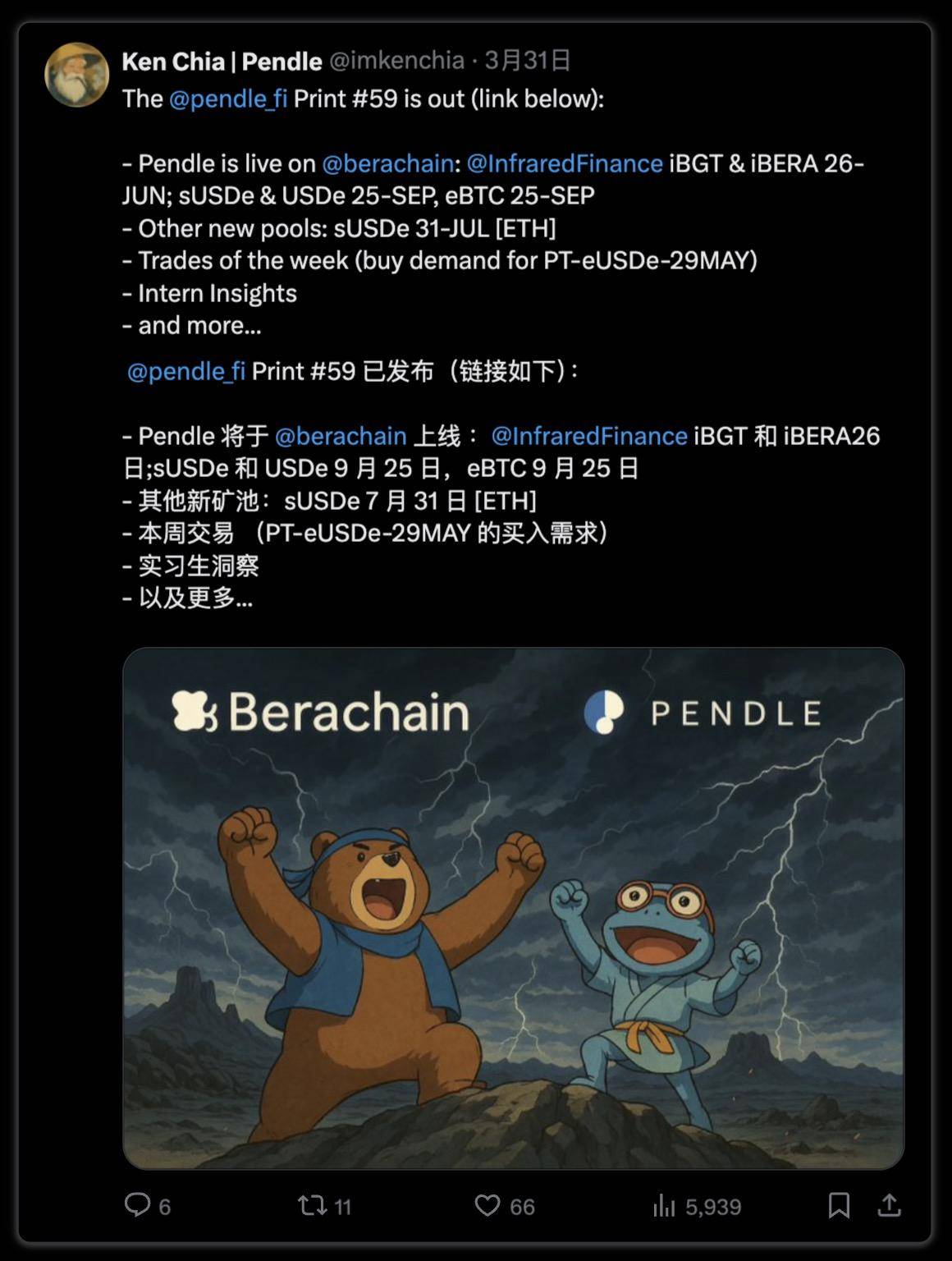
Token Economics
The $PENDLE token is central to Pendle Finance, supporting cross-protocol governance and interaction. By allowing users to separate yield-generating assets into principal and yield components, Pendle creates new yield management strategies—$PENDLE provides the tools to access and shape this ecosystem.
As of March 31, 2025:
● Price: $2.57
● Market Cap: $410.6 million
● Fully Diluted Valuation: $725.2 million
● Circulating Supply: 161.31 million (57.3% of max supply)
● Max/Total Supply: 281,527,448 PENDLE
Since September 2024, the emission of $PENDLE has decreased by 1.1% weekly, from a weekly emission of 216,076 tokens. After 29 weeks, this rate has now decreased to approximately 156,783 tokens per week. This reduction plan will continue until April 2026, after which the protocol will transition to a terminal inflation rate of 2% per year to maintain long-term incentives.
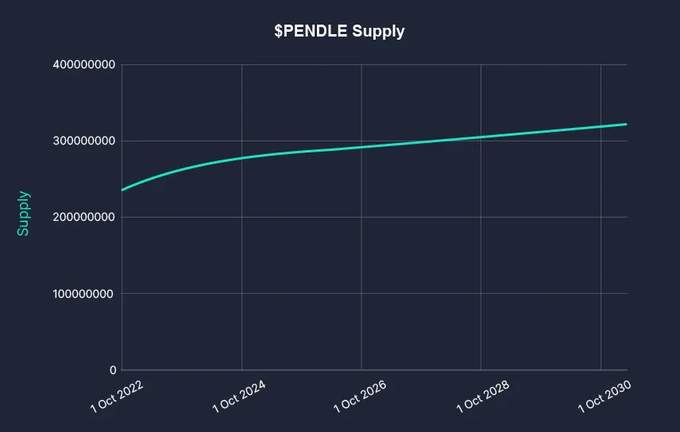
Source: Pendle Tokenomics – Emission and Supply Timeline
PENDLE Enhances Utility through vePENDLE
Pendle improves governance and decentralization through the voting-locked version of the $PENDLE token, $vePENDLE. Users earn $vePENDLE by locking their tokens for up to two years. The longer the lock, the more $vePENDLE received. Over time, $vePENDLE linearly decays to zero, at which point the locked $PENDLE is unlocked.
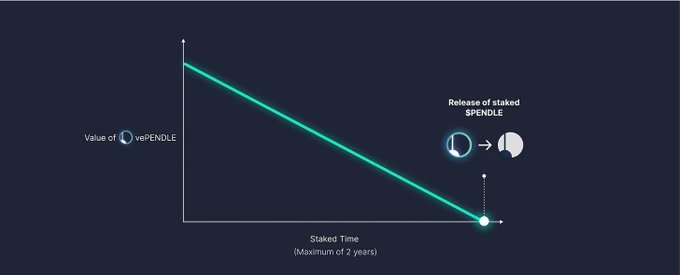
Source: Pendle Tokenomics
This locking mechanism reduces circulating supply, supports price stability, and adjusts long-term incentives across the ecosystem.
Advantages of vePENDLE
● Voting rights in protocol decisions
● Distribution of yield fees
● Exclusive rewards and airdrops
By 2024, active vePENDLE holders earn an average of ~40% APY, excluding the $6.1 million airdrop distributed only in December.
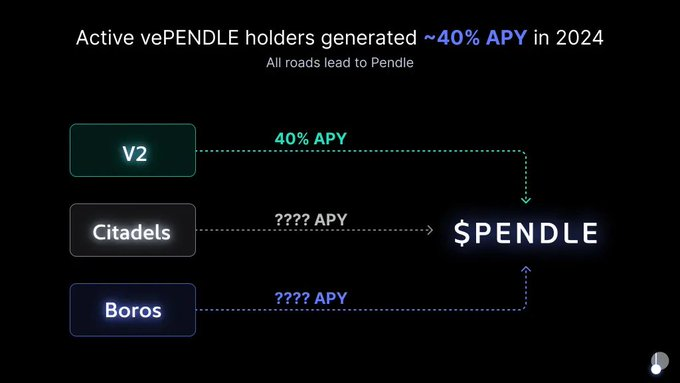
Source: Pendle (via Medium publication)
The Pendle Protocol primarily generates value through the following means:
● Yield Trading (YT) Fees: A 3% fee on interest-bearing tokens.
● Swap Fees: A fee of 10 to 30 basis points (bps) per transaction, depending on the specific liquidity pool.
● Expired PT Yields: A portion of the yields from expired but unredeemed principal tokens (PT) is distributed proportionally among vePENDLE holders.
Currently, Pendle allocates 100% of its protocol revenue directly to vePENDLE holders, with no funds reserved for the Pendle treasury. However, this distribution model may evolve to include future treasury contributions.
As Pendle continues to expand through V2, Citadels, and Boros, vePENDLE holders will benefit from increased value accumulation, thereby strengthening vePENDLE's central role in the Pendle ecosystem.
Key Risks and Challenges
Despite Pendle's strong position in the DeFi ecosystem, there are still some risks. Its complexity remains a barrier to broader adoption—especially for users unfamiliar with yield trading mechanisms. Unlocking the next wave of growth will require ongoing efforts to simplify the user experience and reduce the learning curve surrounding PT, YT, and fixed income strategies.
Without sufficient background information, Pendle's current high concentration of TVL in the Ethena mining pool may also be viewed as a risk. Nevertheless, Pendle's role as a DEX focused on yield allows it to remain agile and responsive to changing market narratives. In 2024, over 60% of Pendle's TVL was allocated to ETH liquid staking tokens (LRT). By 2025, this composition changed, with over 60% now concentrated in stablecoin and synthetic dollar pools, reflecting the evolving market demand.
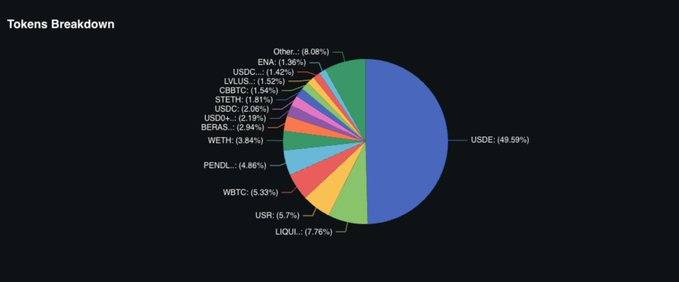
Source: DeFiLlama (defillama.com)
Other considerations include smart contract risks, oracle reliability, and market volatility of the underlying assets. Low liquidity in some mining pools can also lead to slippage or reduced capital efficiency for users exiting positions.
Finally, Pendle's recent growth has been partly driven by airdrops and point-based incentives. As these programs gradually phase out, sustained momentum will depend more on the core utility of the protocol, diversified sources of yield, and the continued rollout of products like Boros and multi-chain Citadels.
Conclusion
While market cycles often lead to fluctuations in investor sentiment and attention, Pendle continues to build with a long-term vision. Its ability to offer customizable fixed income strategies places it at the forefront of DeFi innovation—enabling users to manage volatility, hedge effectively, and unlock predictable returns. This positions Pendle as a natural bridge between the complexities of traditional finance and the composability of on-chain markets.
Looking ahead, the 2025 roadmap paves the way for broader adoption and deeper liquidity. Continued success will depend on simplifying the user experience and transcending short-term narratives.
With the growth of the stablecoin market and the exponential increase in tokenized assets, Pendle is well-positioned to become the fixed income layer powering the next wave of asset issuance. Its recent strong momentum reflects demand and market confidence. If execution proceeds as planned, Pendle could become a core pillar of the future of DeFi fixed income.
To stay updated on the latest developments in the Pendle ecosystem, here are some relevant accounts to follow:
@pendlefi @imkenchia @PendleIntern @cryptolinn @degensgrandma @tnpendle @DeFi_Perryy
免责声明:本文章仅代表作者个人观点,不代表本平台的立场和观点。本文章仅供信息分享,不构成对任何人的任何投资建议。用户与作者之间的任何争议,与本平台无关。如网页中刊载的文章或图片涉及侵权,请提供相关的权利证明和身份证明发送邮件到support@aicoin.com,本平台相关工作人员将会进行核查。




